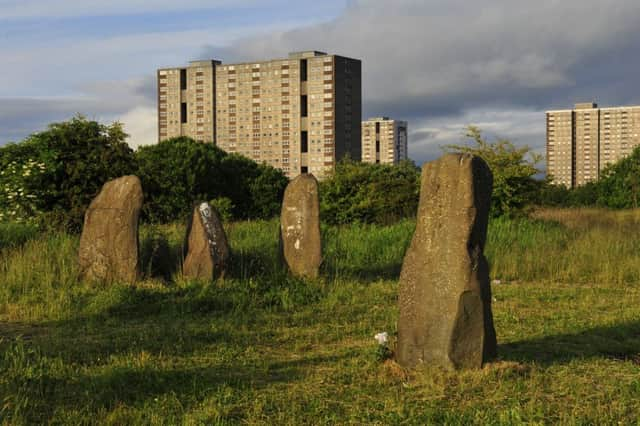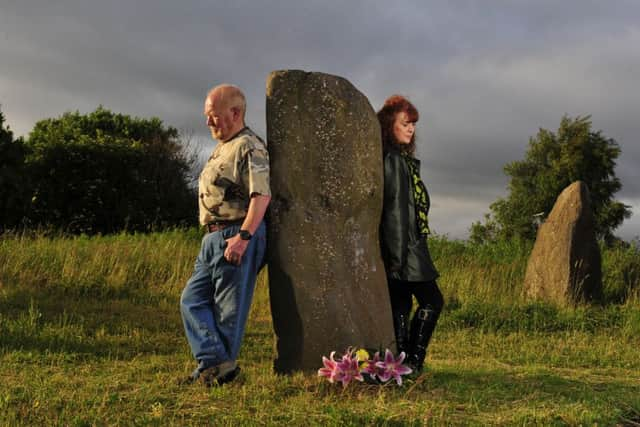Sighthill stone circle will help area's regeneration


It will act as a symbol of rebirth as the district, a short distance north of George Square, benefits from new housing after decades of neglect.
The city council had announced its intention to remove the stones from their original location in 2012 as part of a £250m regeneration project in Sighthill, despite a vigorous public campaign for their retention.
Advertisement
Hide AdAdvertisement
Hide AdThere were fears the circle, officially known as the Sighthill Megalith, would be lost.


But plans have been revealed which show the 17 stones will be relocated - and astronomically aligned - close to the original site as part of a redeveloped Sighthill Park.
The stone circle was built in 1979 and was known as the Glasgow Parks Department Astronomy Project.
There are 17 stones in the circle. Sixteen form the perimeter, and the final stone, the largest and weighing more than four tons, occupies the centre.
The stones, whinstone quarried in Kilsyth, were lowered into position by navy helicopter, an operation codenamed Megalithic Lift.


A young astronomy and science-fiction writer named Duncan Lunan was put in charge of the parks department’s Astronomy Project, in which role he hit upon a plan to create a contemporary and urban equivalent of Callanish or Stonehenge – standing stones properly aligned with the sun and moon and thus able to mark the passing seasons.
Lunan, now in his 60s, led the campaign to save the circle from demolition during a planned redevelopment of the area
Advertisement
Hide AdAdvertisement
Hide Ad“They say in your life you should love somebody and build something,” he told The Scotsman in 2013.
“Well, I have done both. That’s mine and it’s not a trivial thing. I feel I carved it out of the air. It was expected to last for thousands of years, maybe even longer. You would have thought that unless the glaciers came back nothing could harm it, but I wasn’t thinking in terms of deliberate destruction by the council for whom it was originally created.”
READ MORE:
Plans to put Sighthill back at the centre of Glasgow
Sighthill was originally known as Broomhill Park and bordered the site of St Rollox chemical works, once the largest in the world.
It was founded in 1800 by the noted industrialist Charles Tennant, the inventor of bleaching powder.
Following the plant’s closure in 1964 the area was earmarked for local authority housing, comprising 10 ‘slab’ multistory blocks as well as smaller maisonette buildings.
But a lack of maintenance and the general unpopularity of high-rise living meant Sighthill became known as a by-word for poverty and a lack of amenities.
It was designated one of eight Transformational Regeneration Areas (TRAs) in the city, which the local authority, housing associations and Scottish Government identified as priorities for large-scale regeneration.
Advertisement
Hide AdAdvertisement
Hide AdWork was not scheduled until the late 2020s but the Glasgow bid to hot the 2018 Youth Olympic Games - which would have seen the athlete’s village built in Sighthill - allowed the project to be accelerated.
The remaining high-rise blocks will be demolished in stages this year while major soil decontamination work is carried out across the site.